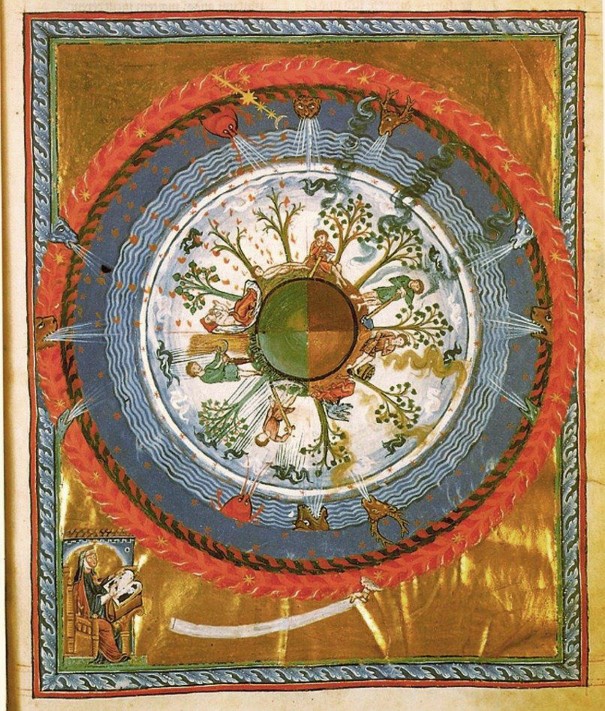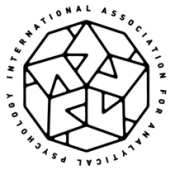
See also ARAS https://aras.org/records/5ek.079
Verena Kast
“We live immediately only in the world of images.” 1 (C.G. Jung)
Representations of fantasies, which are usually entwined around the objects of the world as we can perceive them, but also of events, are understood by Jung as symbols. In his view, human life in general is constituted in a symbolic way: whatever we experience, represent, shape, also refers to an unconscious background, which is also expressed in these symbols, i. e. symbols consist of conscious and unconscious contents.
The word symbol comes from the Greek word “symballein”, which means to throw together, to join together. A symbol, which is “symbolon”, from its conceptual history, is something composed: the visible something of an invisible, ideal reality. The consequence: everything that exists in the world, everything that we experience, means something, has a deeper meaning, refers to something profound.
Objects from the world of perception can become symbols, a ring, for instance. But they are only superficial objects. They contain hints of what is hidden, of what is beneath the surface. The background can be very mysterious: an expression for the completely different, even the unfathomable of life, which fills us with curiosity and longing. So: a ring is an object, but it also symbolizes, for example, a deep, mysterious connection with a certain person.
Depending on the context of the symbol, its meaning also changes, new forms of meaning appear. Symbols have at least a double meaning, they conceal and reveal, hide and show, contain reminiscences and anticipation. Symbols are also memory: in them, what we have experienced is repeated, and occasionally also what humanity has experienced and what is reflected in cultural products. But they do not only repeat, they also change. Our personal problems are usually also typically human problems, but in their individual expression. They are problems that people have always struggled with. Poetry, the performing arts, music, they show variations of symbols, which condense how existential problems have always been depicted in a similar way and have thus also existed. Actually, symbols are projections of our imaginary possibilities.
Symbol and transcendent function
C.G. Jung connects the formation of symbols with the tension of opposites and the resulting transcendent function.
… “the shuttling to and fro of arguments and affects represents the transcendent function of opposites. The confrontation of the two positions generates a tension charged with energy and creates a living, third thing – not a logical stillbirth in accordance with the principle tertium non datur but a movement out of the suspension between opposites, a living birth that leads to a new level of being, a new situation.” 2
In 1916, in his essay “The transcendent function”, Jung describes the emotional content of the psyche, the complexes, as the starting point for fantasies, for symbol formations. “In the
1 C.G. Jung, CW 8, § 624
2 Jung, CW 8, The transcendent function. § 189
intensity of the emotional disturbance itself lies … the energy which he should have at his disposal in order to remedy the state of reduced adaptation.” 3
Those energies show themselves in pictures, in symbols when we concentrate on the affects. As early as 1916, Jung saw the psyche as a self-regulating system, a system whose goal in each case was dynamic equilibrium. According to Jung, the psyche has a tendency to balance one-sidedness; if a person goes too much in one direction, this is compensated for; people who see themselves too brightly, too much without blame, are suddenly confronted with their own shadowy behavior.
The self-regulation of the psyche starts from the emotion and shows itself in fantasies, in symbolic formations.
Connection of complex, dream and symbol
In 1929, in: “The Problems of Modern Psychotherapy” C.G. Jung writes:
“The complex forms, so to speak, a miniature self contained psyche, which…develops a peculiar fantasy-life of its own. What we call fantasy is simply spontaneous psychic activity, and it wells up wherever the inhibitive action of the conscious mind abates or, as in sleep, ceases altogether. In sleep the fantasy takes the form of dreams. But in waking life, too, we continue to dream beneath the threshold of consciousness, especially when under the influence of repressed or other unconscious complexes.” 4
By “other unconscious complexes” Jung means contents that constellate from the unconscious, which were not yet conscious at first, and therefore not repressed. These statements of C.G. Jung are largely consistent with what is being researched today in the field of self-generated thoughts, the “Wandering Mind”. 5
The germs of new life possibilities, which can also be perceived in the complexes, these creative germs, become apparent when the complexes are not repressed, when one concentrates on the mood, feeling or affect and thereby perceives the fantasies that arise and shapes them, i.e. ultimately in the symbols. Symbols are both an expression of the complexes and a place where the complexes are processed. In the symbols the complexes become visible, but in the symbols the complexes also fantasize, so to speak.
The hint that in the affective disorder lies the energy that the sufferer needs for his emotional self-regulation, also for upcoming developmental steps, is a theoretical basis for the various techniques, such as imagination, painting, performing games, sand play, and other techniques that are used in Jungian therapy to place complexes in a larger space of meaning and thus enable a creative transformation.
3 Jung, CW 8, §166
4 Jung, CW 16, §125
5 Fox, CK.R. et al (2018) Affective neuroscience of self-generated Thought. In: Annals of the New York Academy of Sciences, May 2018, p.6
Symbols are overdetermined
Jung: “A term or an image is symbolic if it means more than it describes or expresses. [Symbols] have a comprehensive ‘unconscious’ aspect, which can never be exactly defined or exhaustively explained.”6 Symbols are overdetermined, so we can always look at a symbol anew, take it as a starting point for imaginations and formations and find new meanings for our lives.
Especially in dreams, it seems possible to imaginatively link symbols in a variety of ways, even contradictory ones, so that a whole network of meaning emerges. And all our understanding tries to find the hidden behind the superficial. The symbol and what is represented in it have an inner connection, they cannot be separated from each other; the superficial and the background are linked with each other. That means, the material is represented in the spiritual, the spiritual in the material. Mental processes are represented by pictures and signs. The distinction between immanence and transcendence is overcome in symbol and symbolic thinking. Myths, language, science, religion, art – every area of culture is given to us in symbolic form. Symbols transport and transform emotions and knowledge. Symbols, especially collective symbols, stimulate us, move us inwardly, move us emotionally, but also give form to our emotions, grasp them. This is probably also the reason why people love art, literature, stories of all kinds, films. People seem to need the archetypal images and stories in order to have a content life, or to regulate themselves, for example to find a way out of boredom, but also to integrate what has been left out of life so far, to satisfy basic spiritual needs. Psychological transformations can also be made visible through changing symbols in dreams and in the imagination.

Dr. Verena Kast was Professor of Psychology at the University of Zurich and training analyst, supervisor and lecturer at the C.G. Jung Institute of Zurich.
From 1995 to 1998 president of IAAP, from 1989 – 2013bpresident of the International Association of Depth Psychology, 1999 – 2020 member of the board of directors of the Lindauer Psychotherapiewochen.
She lectures throughout the world and is the author of numerous books on psychological issues, among others: The Dynamics of Symbols. Fundamentals of Jungian Psychology., Imagination as Space of Freedom., Growth through Emotions.

